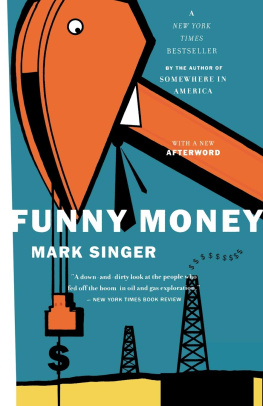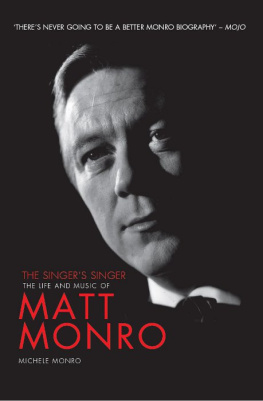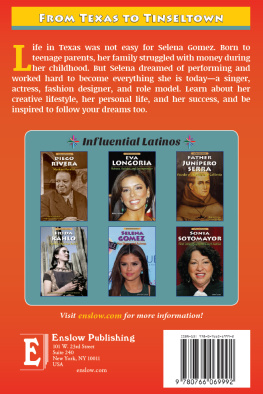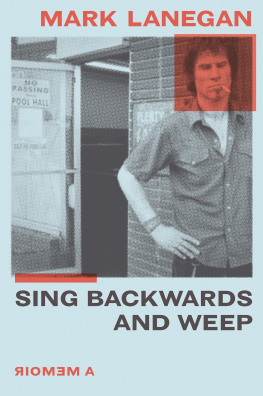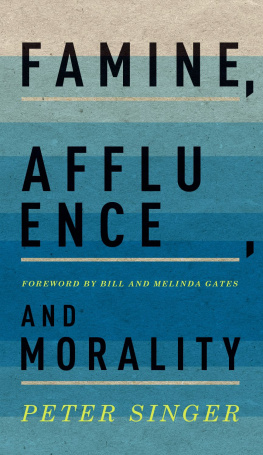First Mariner Books edition 2004
Copyright 1985 by Mark Singer
Afterword copyright 2004 by Mark Singer
All rights reserved
For information about permission to reproduce selections from this book, write to Permissions, Houghton Mifflin Harcourt Publishing Company, 215 Park Avenue South, New York, New York 10003.
www.hmhco.com
Library of Congress Cataloging-in-Publication Data is available.
ISBN -13: 978-0-618-19727-9 (pbk.)
ISBN -10: 0-618-19727-3 (pbk.)
e ISBN 978-0-547-52646-1
v2.0615
Portions of this book originally appeared in The New Yorker.
The gambling propensity is another subsidiary trait of the barbarian temperament.
Thorstein Veblen, The Belief in Luck
May he not be knave, fool, and genius altogether?
Herman Melville, The Confidence Man
Characters in This Book
Bill P. Jennings: chairman of the board and principal owner of the Penn Square Bank, Oklahoma City, Oklahoma.
Robert A. Hefner III: Penn Square Bank borrower; geologist-as-artist-hero; prophet of the Anadarko Basin, a vast natural gas deposit.
William G. Patterson: head of oil-and-gas lending, major stockholder, and director of the Penn Square Bank.
J. D. Allen: Penn Square Bank borrower; owner of J. D. Allen Industries, Inc., and many other enterprises.
Carl Swan: oilman; Penn Square Bank stockholder, director, and borrower; business associate of J. D. Allen.
Eldon Beller: president of the Penn Square Bank.
Frank Murphy: vice-chairman and former president of the Penn Square Bank.
Roger Anderson: chairman of the Continental Illinois National Bank and Trust Company, Chicago.
John Lytle: vice-president, midcontinent oil-and-gas division, Continental Illinois National Bank and Trust Company.
Tomcat No. 1: a spectacular natural gas well in Caddo County, Oklahoma.
Buddy Appleby: oil-and-gas prospector, promoter of the Tomcat No. 1.
1
The auctioneer had a full beard and a self-confident rat-a-tat palaver and he wore a three-piece powder-blue suit. At first the powder-blue suit threw me because I had expected a more somber style, something closer to the hues of a funeral director, but then I realized that, next to the dean of the bankruptcy bar, the auctioneer was probably the most light-spirited workingman in town. Once the prices of crude oil and natural gas broke, life began to settle down to where it belonged, and the auction business thrived: deep rigs, workover rigs, rig-up trucks, lowboy trailers, derrick trailers, forklifts, heater treaters, separators, compressors, cranes, welders, graders, mixers, dumpers, crushers, chains, boomers, blocks, floats, frac tanks, pickups, jets, choppers, quarter horses, polo ponies, lithographsthey were all for sale.
This one was an automobile auction and these were not just anybodys cars. Everyone except the members of the news media behind the ropes, the auctioneer commanded. He introduced himself as Donovan Arterburn, Jr. No need to spend a lot of time on a formal introduction of the merchandise. I did not intend to bid on any of it, nor did most of the three or four thousand other people who had turned out, but we knew why we were there. Most of us intended to elbow as close as possible to the rope barricades and gawk at what used to be the corporate fleet of the Penn Square Bank, Oklahoma City, Oklahoma. Two long rows of vehiclesforty-six late-model passenger cars and one three-wheeled utility truckfaced each other, ten yards apart. Hours earlier, the hoods had been raised for anyone who wanted to view the innards, but now they were closed and the bid spotters and security guards had ushered us away. I was reminded of news photos of captured war prisoners and matriel.
The Office of the Comptroller of the Currency, which is a branch of the Department of the Treasury, determines when a national bank has failed. On July 5, 1982, the Comptroller declared the Penn Square Bank insolvent, and the Federal Deposit Insurance Corporation (FDIC) moved in immediately to settle the banks affairs. According to the Comptroller, the Penn Square Bank owned a portfolio of uncollectible loans whose face value exceeded the banks capital; too many of the banks customers had borrowed more money than they could ever repay; liabilities considerably surpassed assets; the bank was bankrupt. Two months into the liquidation, the automobile auction took place. The bank building stood about three hundred yards due east, tucked into a corner of the Penn Square shopping center, and the FDIC auditors toiled there right now, sifting for clues. The auditors believed that the bank had designed its own demise. The banks owners, employees, customers, and admirers were convinced that liquidating the bank was a mistake. Whatever the case, Donovan Arterburn, Jr., had come to sell the cars.
Holding the auction in the Penn Square parking lot made good sense. It was not a puny parking lot. One of the newer shopping malls, further north into the suburbs, had a larger lot, but the one at Penn Square could handle a sizable crowd. And, after all, these had been the banks cars. Announcements in the newspapers had said that the auction would get underway at seven oclock in the evening. Ever since the previous morning, when the cars had begun arriving, pensioners in knit shirts and straw fedorasmen with some time to kill while their wives canvassed the mallhad been dropping by, irritating the armed guards with the same questions, questions that the guards did not have answers to and would not have answered even if they had known the facts.
Which of these cars did Jennings drive? the men in the summer fedoras wanted to know. Which one was Pattersons? Bill P. Jennings had been the chairman of the board and the largest stockholder of the Penn Square Bank, and Bill Patterson, his protg, had been the head of the banks oil-and-gas lending department. It had taken Jennings, Patterson, and the banks employees less than three years to book almost two and a half billion dollars in oil-and-gas loansthree exhilarating years which had brought to Oklahoma more out-of-towners in quest of fun and profit than anything since the land rush of 89. If not for Bill Jennings and Bill Patterson, there would not have been an auction. All of us rubberneckers out for a free show appreciated that.
Frequently, the Oklahoma City cognoscenti described the scuttlebutt they fed one another as just street talk. That phrase always aroused my skepticism because I knew that in Oklahoma City a pedestrian was a person in transit to or from his automobile. I had picked up some street talk to the effect that Patterson drove a sea-green Porsche and Jennings was chauffeured in an oyster-white Rolls-Royce Silver Shadow. Or perhaps I had heard something completely different. Keeping rumors straight was a task. In any event, I could look over the parking lot and see that there were no Porsches or Rollses for sale. There were some decent Lincoln Town Cars, a Continental, a Cadillac, plenty of smooth-riding Ford and GM sedansloaded with options like cruise control, tilted steering wheels, FM with the AM, a few tape decks and CBsbut nothing truly ostentatious.
As big little cities go, Oklahoma City has some imperfections. During the 1960s, for instance, the downtown business center was subjected to an urban-renewal blitz that eliminated whatever looked uncontemporary. After the bulldozers had finished their work it became evident that no one had given much thought to what might replace the old structures that had just been destroyed. Ever since, no-there-there architecture has flourished. You do not see many human beings at street level because most of the buildings are connected by a network of air-conditioned pedestrian tunnels. Summer usually lasts five punitive months. On hazy days all of downtown threatens to disappear. A six-lane piece of east-west interstate forms a southern perimeter that can deposit you in the business district unless you prefer to keep driving until you hit Fort Smith or Amarillo. Fighting the brain-fogging heat, you pass the oilfield supply yards, heavy-metal industrial sprawl, idle pumping units, stacked rigs, gizmoid billboards. When the wind comes in from the south it carries the aroma of stockyards beyond the North Canadian River. The road surface elevates as downtown presents itselfa canned silhouette of undifferentiated boxes, many of them covered by aluminum foil or whatever that material is that buildings are wrapped with to divert attention from their missing details. The glare deprives the senses, and the whole place seems to evaporate. You look into the foil and try to reassure yourself that you can see where you are and that it is someplace.
Next page
